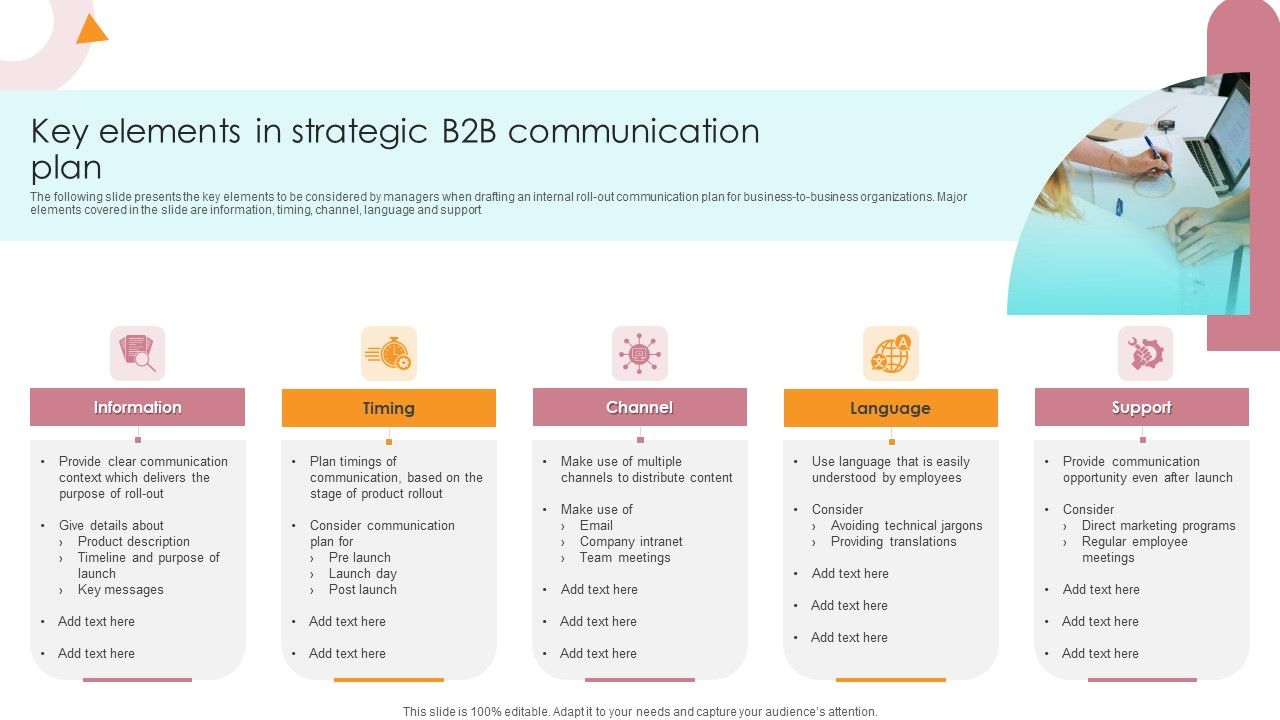A key element in any direct marketing program is a clear call-to-action. This element prompts the audience to take a specific action, such as making a purchase or signing up for a newsletter.
Without a compelling call-to-action, the effectiveness of the marketing campaign can be significantly reduced. Direct marketing relies on this element to drive conversions and engage customers directly. By including a strong call-to-action, businesses can guide potential customers through the sales funnel more effectively and ultimately achieve their marketing objectives.
In the competitive landscape of direct marketing, a compelling call-to-action sets a campaign apart and drives tangible results.

Credit: www.slidegeeks.com
1. Key Elements In Direct Marketing Program
Target Audience: The first key element in any direct marketing program is identifying the target audience. Understanding the demographics, interests, and behaviors of the audience is crucial for creating effective marketing campaigns.
Call to Action: A strong and clear call to action is essential for prompting the audience to take the desired action. Whether it’s making a purchase, signing up for a newsletter, or requesting more information, the call to action should be compelling and easy to follow.
Personalization: Personalizing the marketing message to resonate with individuals on a personal level can significantly enhance the effectiveness of a direct marketing program. Utilizing customer data to tailor the message and offers can lead to higher engagement and conversion rates.
2. Importance Of Data Analysis
Data analysis is a key element in any direct marketing program. It helps in monitoring and measuring results to determine the effectiveness of marketing strategies. It also enables businesses to identify customer segments, allowing for more targeted and personalized marketing efforts. By analyzing data, businesses can gain valuable insights into customer behaviors and preferences, leading to more successful marketing campaigns. Additionally, data analysis helps in understanding customer needs and improving overall customer satisfaction.
3. Channels For Direct Marketing
Direct marketing programs utilize various channels to reach potential customers. These channels act as key elements in the overall strategy to connect with target audiences and generate leads. Three prominent channels used in direct marketing are:
- Email Marketing: An effective channel that involves sending targeted messages directly to customers’ inboxes. This allows for personalized communication and the opportunity to build relationships.
- Direct Mail: A traditional yet impactful channel that involves sending physical mail to potential customers’ mailboxes. This method enables businesses to stand out and deliver tangible, personalized messages.
- Telemarketing: This channel involves making direct phone calls to potential customers. It provides opportunities for two-way communication and allows for immediate feedback and response.
Each of these channels plays a vital role in any direct marketing program, serving as powerful tools to engage customers and drive desired actions. Choosing the appropriate channel(s) depends on factors such as target audience preferences, budget considerations, and campaign objectives.
4. Creating Compelling Offers
Creating Compelling Offers
- Value Proposition: Highlight the unique benefits that your product or service offers.
- Benefits vs. Features: Focus on how your offering solves the customer’s problem.
- Limited Time Promotions: Drive urgency and incentivize immediate action from potential customers.
5. The Role Of Testing And Optimization
Testing and Optimization are crucial elements in any direct marketing program. Through A/B testing, marketers can compare two versions of a webpage to determine which one performs better. This allows for conversion rate optimization by identifying and implementing strategies to improve the percentage of website visitors who complete the desired action. By continually testing and optimizing, businesses can enhance their marketing efforts and achieve better results.

Credit: www.sprintzeal.com
6. Building Customer Relationships
Building customer relationships is a key element in any direct marketing program. Retention strategies play a vital role in maintaining customer loyalty. It involves providing excellent customer service and personalized communication to retain existing customers. On the other hand, cross-selling and up-selling are essential for increasing revenue from existing customers by offering them additional products or services that complement their initial purchase.

Credit: www.slideteam.net
Frequently Asked Questions On Which Of The Following Is A Key Element In Any Direct Marketing Program?
Which Is A Key Aspect Of Direct Marketing Programs?
One key aspect of direct marketing programs is targeting specific audiences to deliver personalized and timely messages. This allows companies to build relationships with customers, measure the effectiveness of campaigns, and encourage direct responses or actions.
Which Of The Following Is A Key Feature Of Direct Marketing?
Personalized communication tailored to individual customers’ needs and preferences is a key feature of direct marketing.
What Are The Key Characteristics That Differentiate Direct Marketing From Most Other Forms Of Marketing Tools?
Direct marketing is characterized by personalized messaging, targeted audience, measurable results, and direct communication channels, setting it apart from traditional marketing methods.
What Is Direct Marketing Quizlet?
Direct marketing on Quizlet is a targeted promotional strategy that directly engages with individuals to promote products or services. It delivers personalized messages through channels like email, social media, and direct mail to reach specific audiences. This method helps businesses connect with potential customers and track the effectiveness of their marketing efforts.
What Is The Importance Of Data In Direct Marketing Programs?
Data plays a crucial role in tailoring personalized messages to target audiences, increasing campaign effectiveness.
Conclusion
A successful direct marketing program hinges on several key elements. Firstly, a clear and compelling call-to-action is crucial to engage and motivate potential customers. Secondly, a well-defined target audience allows for personalized and tailored communication. Thirdly, tracking and analytics provide valuable insights for continuous optimization.
Lastly, seamless integration with other marketing channels ensures consistent messaging and maximizes impact. By incorporating these elements, businesses can enhance their direct marketing efforts and drive meaningful results.











